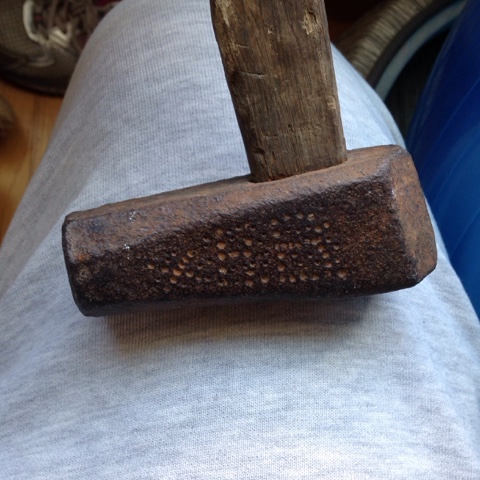In the forges of my youth we used mainly straight or ball peens as well as larger sledges. When I lived in Japan I saw some used in the shops I visited but again the majority of hammers were straight, ball and sledge. A recent visit to James Austin's forge in Oakland got my head wrapping back around iron, coupled with a move to East Bay it was kind of a mental homecoming.
To that, I've been dusting off some tools and memories and thought I might post about an old dog's head I layed hands on. It came from Michigan, north of where I grew up, and was found in a log house built in the 1880s. By style, location and time of construction of house its associated with my educated guess is the hammer pre-dates the house. It's very clearly hand made and hafted with a hand shaved handle with wedges we would expect from a smithy. Based on Scandinavian settlement patterns in Michigan and the time period we know the hammer was there, it makes sense to have found it.
It could use some help, cleaning up anyway but in spite of looking rough can be used as is. There are no clear brand markings but there are what appear to be letters, "XhB" or maybe "XRB" on one side of the head.
This type of hammer could very likely have been used to make and maintain crosscut saws of the type introduced into the Michigan logging industry in the 1870's and later and I'd say that's the likely history of this one, especially considering it was found in a log house.
It's future will be as part of my forge tooling. Someone put a lot of time and effort into making it and clearly valued it enough to mark it so it would find its way back to them if lost. The least I can do is put it back to work.










